|
Photo Gallery
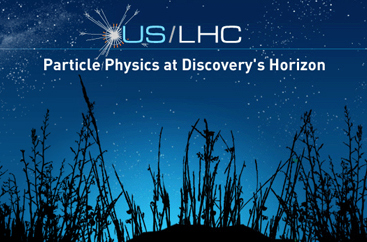
The U.S. at the Large Hadron Collider
Discoveries at the Large Hadron Collider at CERN near Geneva, Switzerland will open new vistas on the deepest secrets of the universe, stretching the imagination with new forms of matter, new forces of nature, and new dimensions of space. US scientists and engineers, supported by the U.S. Department of Energy Office of Science and the National Science Foundation, have helped to build the LHC, soon to become the world's most powerful particle accelerator. More than 1200 physicists from 90 American universities and laboratories have joined with scientific colleagues from around the world to collaborate in LHC experiments at the horizon of discovery.

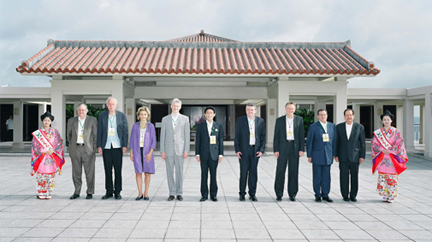
On June 15, 2008, representatives of the the G8 nations convened in Okinawa, Japan, for a G8 Science and Technology Ministerial. The U.S. delegation was led by Dr. Raymond L. Orbach, Under Secretary for Science at the U.S. Department of Energy. During the ministerial, Dr. Orbach encouraged multilateral collaboration in the development of next-generation large-scale research facilities to advance scientific discovery and address pressing global energy challenges. Dr. Orbach and his counterparts also explored opportunities for increased collaboration in the research and development of clean energy technologies to promote a low-carbon society, as well as ways to promote sustainable development around the globe, through scientific research related to water, food and energy supplies, infectious diseases, and biodiversity. Pictured are the G8 heads of delegation (left to right): Mr. Richard Dicerni (Canada), Professor Frieder Meyer-Krahmer (Germany), Ms. Valerie Pecresse (France), Professor Andrey Fursenko (Russia), Mr. Fumio Kishida (Japan), Mr. Ian Pearson (United Kingdom), Dr. Janez Potocnik (European Union), Mr. Giuseppe Pizza (Italy), Dr. Raymond L. Orbach (USA).


On May 5, 2008, a team from Santa Monica High School in Santa Monica, CA won the 2008 U.S. Department of Energy National Science Bowl®. Shown here with the first-place trophy are (from left) Secretary of Energy Samuel W. Bodman; coach Ingo Gaida; students Ian Fels Scheffler, Marino Di Franco, Dimitry Petrenko, and Alexandre Boulgakov; and Under Secretary for Science Dr. Raymond L. Orbach. Initiated in 1991, the DOE National Science Bowl® encourages students to excel in science and math, and to pursue careers in those fields. The DOE National Science Bowl® is the only science competition in the U.S. sponsored by a federal science agency and involves more than 12,000 students from 1,800 schools nationwide each year. Photo by Dennis Brack.

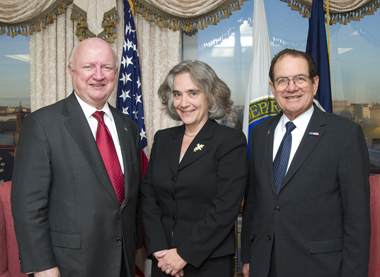
On December 6, 2007, Persis S. Drell (center) was named Director of the Stanford Linear Accelerator Center (SLAC) by Stanford University president John Hennessy. Dr. Drell, a professor of physics at SLAC, has held a series of senior positions at the laboratory since 2002 and has served as acting director since September. Stanford operates SLAC on behalf of the U.S. Department of Energy. Dr. Drell's appointment was supported by U.S. Secretary of Energy Samuel W. Bodman (left) and Under Secretary for Science Dr. Raymond L. Orbach (right).

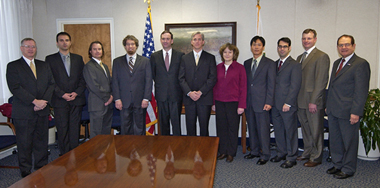
On November 1, 2007, at a White House ceremony, eight DOE “early career” researchers received the 2006 Presidential Early Career Award for Scientists and Engineers (PECASE), the highest honor bestowed by the U.S. government on outstanding scientists and engineers who are beginning their independent careers. Each PECASE winner received a citation, a plaque and a commitment for continued funding of their work from their agency for five years. The eight DOE researchers -- four funded by the Office of Science at DOE labs and four supported by the National Nuclear Security Administration (NNSA) Office of Defense Programs at universities -- also were honored at a DOE event hosted by Deputy Secretary of Energy Clay Sell. Pictured from left to right: Principal Deputy Administrator for National Nuclear Security William C. Ostendorff; Carlos Pantano-Rubino, University of Illinois at Urbana-Champaign; Shawn Newsam, University of California, Merced; Brian J. Kirby, Cornell University; Jeffrey Kysar, Columbia University; Deputy Secretary Sell; Julia Laskin, Pacific Northwest National Laboratory; Ho Nyung Lee, Oak Ridge National Labratory; Kyle Cranmer, Brookhaven National Laboratory; Len A. Pennacchio, Lawrence Berkeley National Laboratory; DOE Under Secretary for Science Dr. Raymond L. Orbach. For more information...

In November 2003, in the landmark publication Facilities for the Future of Science: A Twenty-Year Outlook, the U.S. Department of Energy proposed a portfolio of 28 prioritized new scientific facilities and upgrades of current facilities spanning the scientific disciplines to ensure the U.S. retains its primacy in critical areas of science and technology well into the next century. Now a new DOE Office of Science publication, Four Years Later: An Interim Report on 'Facilities for the Future of Science: A Twenty-Year Outlook,' shows that the agency has made significant progress in deploying the scientific facilities and instruments that the United States needs to capture world scientific leadership, extend the frontiers of science, and support DOE's missions.

Wolfgang K. H. “Pief” Panofsky, professor of physics at Stanford University and director emeritus of the Stanford Linear Accelerator Center (SLAC), died of a heart attack at his home in Los Altos, California, on September 24, 2007. He was 88 years old. Panofsky was a renowned particle physics researcher, an accelerator builder and an administrator of basic research. In parallel with his science career, he pursued two other interests of interrelated historical significance: nuclear arms control and international peace and security. Dr. Panofsky was awarded many honors during his lifetime, most notably the National Medal of Science in 1969 and the U.S. Department of Energy’s Enrico Fermi Award in 1979. (Image courtesy of Diana Rogers, SLAC)

On September 18, 2007, the U.S. Department of Energy’s Office of Scientific and Technical Information (OSTI) commemorated its 60-year contribution to accelerating scientific discovery through the preservation and sharing of DOE R&D results. Historical exhibits and a program for retirees, former and current employees, and business and community leaders was held at the OSTI facility in Oak Ridge, Tennessee. Jeffrey Salmon, Associate Under Secretary for Science (pictured here); Eugene Garfield, Chairman Emeritus of Thomson Scientific; and Walter Warnick, OSTI Director, were speakers. During the event, the launch of DOePatents, a new website developed by OSTI, was announced.

On August 4, 2007, Under Secretary for Science Dr. Raymond L. Orbach spoke at the summer graduation ceremony at Iowa State University (ISU), which is celebrating its sesquicentennial. The topic of Dr. Orbach's commencement address was "Transformational Science for Energy and the Environment." The previous day, Dr. Orbach visited Ames Laboratory, which is celebrating its 60th anniversary and which ISU manages for the DOE Office of Science.

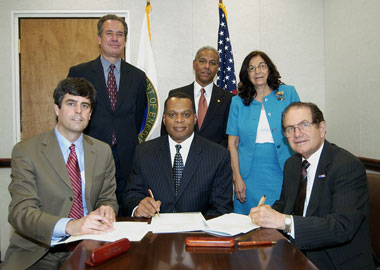
Oak Ridge National Laboratory (ORNL) and Morehouse College, an historically black college and university (HBCU), have signed a Mentor-Protege Agreement, the first such agreement between an HBCU and a DOE Office of Science lab. The new joint initiative will assist students in the college's science programs and promote research collaboration at both institutions. On July 27, 2007, Under Secretary of Science Dr. Raymond L. Orbach hosted representatives of ORNL and Morehouse at a ceremony honoring the agreement. Pictured are (seated from left) Dr. Thom Mason, Director, ORNL; Phillip Howard, Vice President, Morehouse College; Under Secretary for Science Orbach; (standing from left) William Valdez, Director, Office of Workforce Development for Teachers and Scientists, DOE Office of Science; Dr. James Page Brown, Director, Office of Research Careers, Morehouse College; and Theresa Alvillar-Speake, Director, DOE Office of Minority Economic Impact and Diversity.

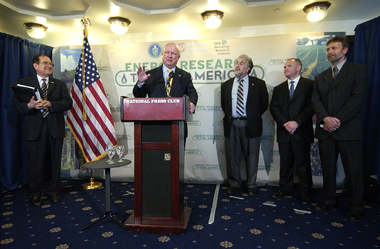
On June 26, 2007, Secretary of Energy Samuel W. Bodman announced the selection of three new DOE Bioenergy Research Centers, to accelerate basic research in the development of cellulosic ethanol and other biofuels. Joining the Secretary at the National Press Club event were (from left) Under Secretary for Science Dr. Raymond L. Orbach and the three Center Directors: Dr. Timothy Donohue, DOE Great Lakes Bioenergy Research Center, led by the University of Wisconsin-Madison; Dr. Jay Keasling, DOE Joint BioEnergy Institute, led by the Lawrence Berkeley National Laboratory; and Dr. Martin Keller, DOE BioEnergy Science Center, led by Oak Ridge National Laboratory.

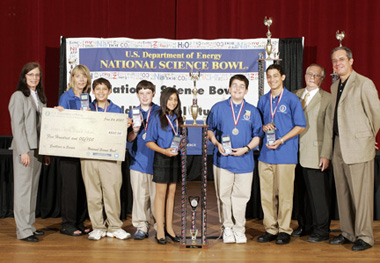
Honey Creek Middle School from Terre Haute, IN won the 2007 U.S. Department of Energy National Science Bowl® for Middle School Students at the University of Denver on June 24, 2007. It was the middle school’s third straight championship. Pictured here, from left, are: Kristen Zimmerman from GM, Carol Tolin (Coach), Mark Botros, Ian Francis, Julie Bittar, Michael Mardini, Joseph Botros, Tom Hibbs from Texas Instruments and Bill Valdez from DOE's Office of Science.

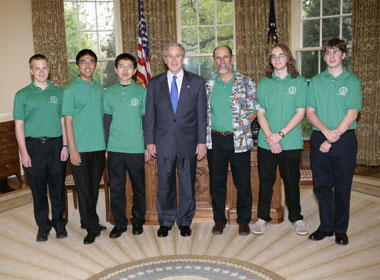
President George W. Bush met with the winners of the U.S. Department of Energy's National Science Bowl® on April 30, 2007 in the Oval Office. The winning team is from Poudre High School in Fort Collins, CO. Shown here with the President (from left to right) are Sam Elder, Winston Gao, Sam Sun, Poudre High School chemistry teacher and National Science Bowl® team coach Jack Lundt, Patrick Chaffey, and Logan Wright. Initiated in 1991, the DOE National Science Bowl® encourages students to excel in science and math, and to purue careers in those fields. The DOE National Science Bowl® is the only science competition in the U.S. sponsored by a federal science agency and involves more than 12,000 students from 1,800 schools nationwide each year. White House photo by Eric Draper.

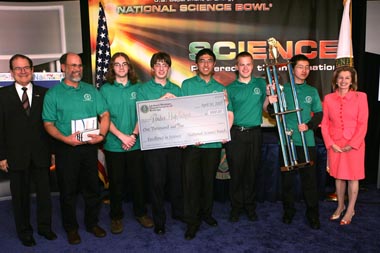
Poudre High School from Fort Collins, CO won the U.S. Department of Energy National Science Bowl® in Washington, DC on April 30. Pictured here with Mrs. Diane Bodman, wife of Secretary of Energy Samuel W. Bodman, and Under Secretary for Science Dr. Raymond L. Orbach is the winning team and its coach. From the left: Under Secretary Orbach, Poudre High School chemistry teacher and National Science Bowl team coach Jack Lundt, Patrick Chaffey, Logan Wright, Winston Gao, Sam Elder, Sam Sun and Mrs. Bodman. Photo by Dennis Brack.

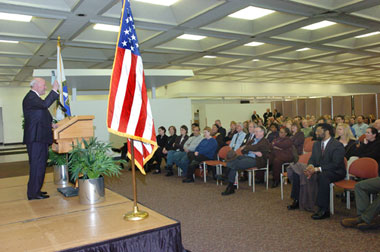
Secretary of Energy Samuel W. Bodman (left) held an all-hands meeting with DOE Chicago Office staff on April 11, 2007. The session was hosted by Chicago Manager Robert C. Wunderlich and attended by nearly 200 of the Department's Office of Science staff from its Chicago Office (including New Brunswick Laboratory) and the Ames, Argonne, and Fermi Site Offices. During his remarks and in a subsequent question-and-answer period, the Secretary stressed the critical roles these organizations play in carrying out the Department of Energy (DOE) missions and assuring effective management of the DOE national laboratories.

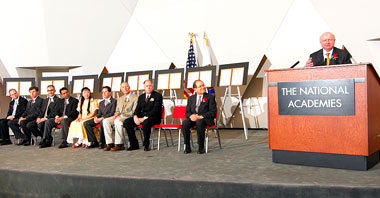
On March 28, 2007, Secretary of Energy Samuel W. Bodman (at podium) presented eight researchers with the 2006 Ernest Orlando Lawrence Award in a ceremony at the National Academy of Sciences. The Award honors scientists and engineers at mid-career for exceptional contributions in research and development that support the Department of Energy and its mission to advance the national, economic and energy security of the United States. The award consists of a gold medal, a citation and an honorarium of $50,000; it is given in seven categories. The recipients of the 2006 Lawrence Awards are (from left): Paul Alivisatos, University of California at Berkeley and E.O. Lawrence Berkeley National Laboratory, and Moungi Bawendi, Massachusetts Institute of Technology, jointly (Materials Research); Malcolm J. Andrews, Los Alamos National Laboratory (National Security and Non-Proliferation); Arup K. Chakraborty, Massachusetts Institute of Technology (Life Sciences); My Hang V. Huynh, Los Alamos National Laboratory (Chemistry); Marc Kamionkowski, California Institute of Technology (High Energy and Nuclear Physics); John Zachara, Pacific Northwest National Laboratory (Environmental Science and Technology); and Steven Zinkle, Oak Ridge National Laboratory (Nuclear Technologies -- Fission and Fusion). Under Secretary for Science Dr. Raymond L. Orbach (second from right) hosted the ceremony. (Photo by Ken Shipp, DOE.)


On January 30, 2007, Under Secretary for Science Dr. Raymond L. Orbach (center, with a laptop in front of him) addressed a meeting of the European Union Science and Technology Counselors held at the Embassy of the Federal Republic of Germany, in Washington, D.C. Speaking on the topic of “Future Research Infrastructures,” Dr. Orbach contrasted the Office of Science’s landmark twenty-year plan, Facilities for the Future of Science, published in 2003, with the recently released European Roadmap for Research Infrastructures.

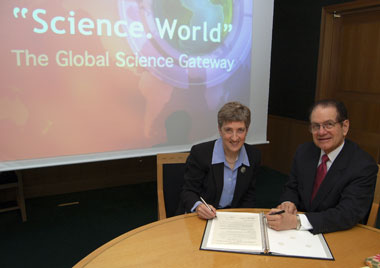
On January 21, 2007, DOE Under Secretary for Science Dr. Raymond L.
Orbach (right) and Lynne Brindley, Chief Executive, the British Library, signed an agreement to partner on the development of a global science gateway. The gateway, "Science.world," eventually would make science information resources of many nations accessible via a single Internet portal. DOE's Office of Scientific and Technical Information will work with the British Library and international counterparts to develop a prototype of "Science.world" in 2007.

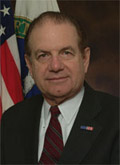 |
Dr. Raymond L. Orbach was sworn in by Secretary Samuel W. Bodman as the Department of Energy’s first Under Secretary for Science on June 1, 2006. Secretary Bodman has tasked Dr. Orbach with the department’s implementation of the President’s American Competitiveness Initiative,will help drive continued U.S. economic growth.
Dr. Orbach continues to serve as the 14th Director of the Office of Science (SC) at the Department of Energy (DOE), a |
| position he has held since the Senate confirmed him and he was sworn in in March 2002. In this capacity, Dr. Orbach manages an organization that is the third largest Federal sponsor of basic research in the United States, the primary supporter of the physical sciences in the U.S., and one of the premier science organizations in the world. |

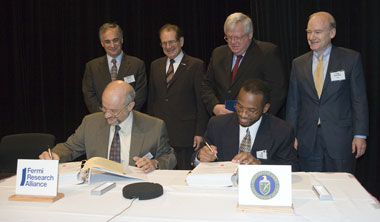
On November 1, 2006, the U.S. Department
of Energy announced the award of a new
$1.575 billion, five-year contract for
management and operation of Fermi National
Accelerator Laboratory (Fermilab) to the
Fermi Research Alliance, LLC (FRA), owned
jointly by the University of Chicago and
Universities Research Association, Inc.
(URA). The announcement was made at a
ceremony at Fermilab, located in Batavia,
Illinois. Pictured here signing the Fermilab
M&O contract are Piermaria Oddone,
Director of Fermilab and President of
FRA (left), and Dennis Wilson, Contract
Officer in the DOE Office of Science Fermilab
Site Office. Observing the signing are
(from left) Robert J. Zimmer, University
of Chicago President and Chairman of the
FRA Board of Directors; DOE Under Secretary
for Science Raymond L. Orbach; Speaker
of the House J. Dennis Hastert; and Fred
Bernthal, President of URA and Vice Chairman
of the FRA Board.

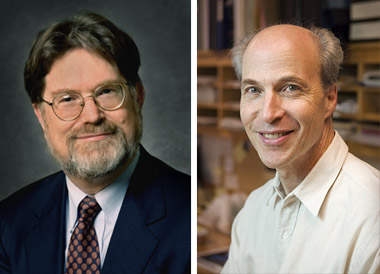
Two scientists supported by the Department of
Energy won a Nobel Prize in 2006. George F.
Smoot (left), an astrophysicist at DOE's Lawrence
Berkeley National Laboratory and the University
of California, Berkeley, was a co-winner of
the 2006 Nobel Prize in Physics for his role
in the precise investigation of cosmic microwave
background radiation that supports the Big Bang
theory of the creation of the universe. Roger
D. Kornberg, a professor of structural biology
at the Stanford University School of Medicine,
won the 2006 Nobel Prize in Chemistry for his
work determining how DNA's genetic blueprint
is read and used to direct the process for protein
manufacture, research for which he carried out
at the Stanford Synchrotron Radiation Laboratory
(SSRL), a DOE-supported facility located at
the Stanford Linear Accerator Center (SLAC).
Including Dr. Smoot and Dr. Kornberg, DOE has
sponsored 45 Nobel Laureates since the Department's
inception in 1977 -- and a total of 85 Nobel
Laureates since 1934 (associated with DOE and
its predeccessor agencies).

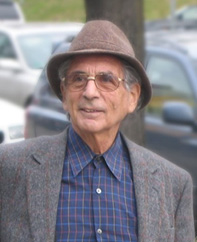 |
Simon Peter Rosen, a leading theorist in elementary
particle physics, an international authority
on neutrino physics, and a director of major
high energy and nuclear physics programs at
the Department of Energy, died on October 13,
2006 at his home in Rockville, Maryland, after
a courageous three-year battle with pancreatic
cancer. He was 73. At the time of his death,
Dr. Rosen was Senior Science Advisor to the
Director of the Department of Energy’s
Office of Science, a position he had held since
2003. He was Associate Director of High Energy
and Nuclear Physics (HENP) in the DOE Office
of Science from 1997 to 2003. The DOE Office
of Science and the entire science community
has lost an outstanding colleague, mentor, and
friend.

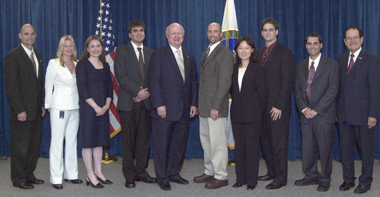
On July 26, 2006, at a White House ceremony,
seven DOE “early career” researchers
received the 2005 Presidential Early Career
Award for Scientists and Engineers (PECASE),
the highest honor bestowed by the U.S. government
on outstanding scientists and engineers who
are beginning their independent careers. Each
PECASE winner received a citation, a plaque
and a commitment for continued funding of their
work from their agency for five years. The seven
DOE researchers -- four funded by the Office
of Science at DOE labs and three supported by
the National Nuclear Security Administration
(NNSA) Office of Defense Programs at universities
-- also were honored at a DOE event hosted by
Secretary of Energy Samuel W. Bodman. Pictured
from left to right: NNSA Deputy Administrator
for Defense Programs Thomas P. D'Agostino; Dr.
Wynne K Schiffer, Brookhaven National Laboratory;
Dr. Wendelin Jane Wright, Stanford University;
Dr. Michael A. Zingale, Stony Brook University;
Secretary Bodman; Dr. Christopher J. Roy, Auburn
University; Dr. Yanwen Zhang, Pacific Northwest
National Laboratory; Dr. Todd Munson, Argonne
National Laboratory; Dr. Daniel W. Bardayan,
Oak Ridge National Laboratory; and DOE Under
Secretary for Science Dr. Raymond L. Orbach.
For
more information…

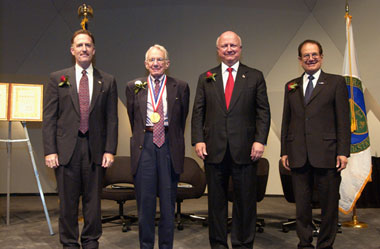
Secretary of Energy Samuel W. Bodman presented
the 2005 Enrico Fermi Award to Arthur H. Rosenfeld
at a ceremony attended by about 200 guests at
the National Academy of Sciences Building on
June 21, 2006. The Fermi Award is a Presidential
award that honors scientists of international
stature for lifetime exceptional achievement
in the development, use or production of energy.
Dr. Rosenfeld, a member of the California Energy
Commission, is the first Fermi Award winner
honored for work in the field of energy efficiency.
Pictured here (from left) are Under Secretary
of Energy David K. Garman, Dr. Rosenfeld, Secretary
Bodman and Under Secretary for Science Raymond
L. Orbach.

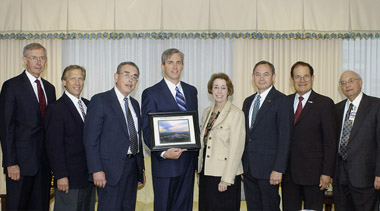
On June 5, 2006, Deputy Secretary of Energy
Clay Sell formally certified the successful
completion of the Spallation Neutron Source
(SNS) project, located at Oak Ridge National
Laboratory (ORNL). The $1.4 billion scientific
user facility will provide the most intense
pulsed neutron beams in the world and enable
the next generation of materials research. The
SNS project exceeded its baseline objectives,
delivering significantly more technical performance
capability than promised, one month ahead of
schedule, and slightly under budget. In addition,
the project achieved an outstanding safety record
with no lost workday injuries in over 4.2 million
construction work hours. Pictured above (left
to right) are Dr. James F. Decker, Principal
Deputy Director, DOE Office of Science; Daniel
R. Lehman, Director, Office of Project Assessment,
Office of Science; Lester K. Price, Spallation
Neutron Source Federal Project Director, DOE
Oak Ridge Office; Deputy Secretary Clay Sell;
Dr. Patricia Dehmer, Associate Director of Science
for Basic Energy Sciences; Jeffrey C. Hoy, SNS
Program Manager, Office of Basic Energy Sciences,
Office of Science; Under Secretary for Science
Raymond L. Orbach; and George Malosh, Acting
Chief Operating Officer, Office of Science.

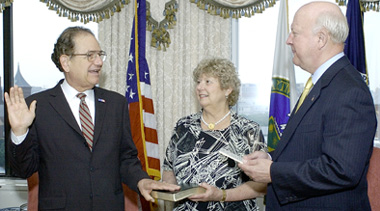
Energy Secretary Samuel W. Bodman (right) administering
the Oath of Office to Dr. Raymond L. Orbach
to be the Department of Energy's (DOE) first
Under Secretary for Science, on June 1, 2006,
as his wife Eva Orbach looks on. Dr. Orbach
was unanimously confirmed by the U. S. Senate
on May 26, 2006. President Bush nominated Dr.
Orbach for the new position, created by the
Energy Policy Act of 2005, in December 2005.
Dr. Orbach will continue to serve as the Director
of the DOE Office of Science, a position he
has held since March 2002.


Dr. Raymond L. Orbach (second from left), Director
of the Department of Energy's Office of Science
and head of the United States delegation to
the initialing of the ITER Agreement in Brussels,
Belgium, on May 24, 2006, with other U.S. delegation
members (left to right), Marvin Singer, Senior
Advisor in the Office of Science and U.S. ITER
Contact Person; Todd Harding, Policy Advisor
to Dr. Orbach; and Tom Vanek, Senior Policy
Advisor in the Office of Science. Countries
representing more than half of the world's population
are participating in ITER, an international
fusion experiment. The ITER negotiations produced
an agreement that should serve as a model for
future large-scale international scientific
collaboration.


The heads-of-delegation of the seven ITER Parties,
including head of the U.S. delegation Dr. Raymond
L. Orbach (second seated official on the right),
Director of the U.S. Department of Energy's
Office of Science, initialing the agreement
to construct the international fusion energy
project, in Brussels, Belgium, on May 24, 2006.
In addition to the United States, the ITER Parties
include China, the European Union, India, Japan,
the Republic of Korea, and the Russian Federation.
ITER's mission is to demonstrate the scientific
and technological feasibility of fusion energy,
the power source of the sun and the stars, which
offers the potential for abundant, safe and
environmentally benign energy.


Mrs. Laura Bush welcomes the 2006 National Science
Bowl Champions from State College Area High
School in State College, Pa., to the White House,
Monday, May 1, 2006. From left to right are
students Barry Liu, Jason Ma, Ylaine Gerardin,Galen
Lynch, Francois Greer and their team coach Julie
Gittings. The National Science Bowl, the nation's
largest science competition, is sponsored by
the U.S. Department of Energy. White House photo
by Kimberlee Hewitt.


Office of Science Dr. Raymond L. Orbach visiting
with students on February 18 at the Office of
Science booth at the 2006 AAAS annual meeting
in St. Louis. The DOE Office of Science supports
a diverse portfolio of research at more than
300 colleges and universities nationwide.


Secretary of Energy Samuel W. Bodman (in grey
sport coat) and Office of Science Director Dr.
Raymond L. Orbach (second from right) during
a tour of the Spallation Neutron Source (SNS)
at Oak Ridge National Laboratory in August 2005.
The $1.4 billion SNS, the largest civilian science
project in the U.S. is on track to be completed
in 2006 on time and on budget. The SNS will
be the world's foremost facility for materials
research.


Secretary of Energy Samuel W. Bodman (right)
and Office of Science Director Raymond L. Orbach
at the 2005 DOE National Science Bowl®.
More than 12,000 high school students from 1,800
schools in 42 states compete each year, making
the DOE National Science Bowl® program the
Nation's largest science competition. The finals
of the 2006 DOE National Science Bowl will be
held in Washington, DC, April 27-May 1.


Office of Science Director Dr. Raymond L. Orbach
testifying at a House Science Committee hearing
on supercomputing in July 2003. Major scientific
challenges in all DOE Office of Science research
programs are being addressed by advanced scientific
supercomputing. Designing materials atom-by-atom,
revealing the functions of proteins, understanding
and controlling fusion plasma turbulence, designing
new particle accelerators, and modeling global
climate change, are just a few examples.
|